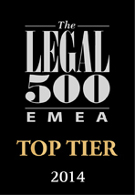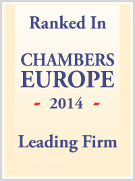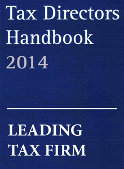
Mergers & Acquisitions (M&A) in Lithuania
Mergers and acquisitions form a part of corporate reorganizations. Reorganization is the process that terminates the legal person without liquidation. It shall be noted that reorganizations should not be confused with corporate restructuring (transformation). Corporate restructuring (transformation) is a change in the legal form of the entity whereby the legal entity in its new form becomes the successor of all rights and responsibilities of the restructured entity.
There are 3 main legal acts that govern mergers and acquisitions in Lithuania:
- Civil code sets out the definition and basic principles of a merger;
- Law on Companies sets out the procedures for merger implementation;
- Law on Competition sets out requirements for merger control and filing requirements.
The basis for the mergers and acquisitions is set out in the civil code of the Republic of Lithuania. Chapter VIII deals with reorganizations and liquidation. Civil code foresees two kinds of consolidations:
- Acquisition, which is a type of consolidation when one or more legal entities are added to another legal entity which takes over all rights and responsibilities of the reorganized entities;
- Merger, which is a type of consolidation when two or more legal entities are merged into a new legal entity that takes all rights and responsibilities of reorganized entities.
The decision to reorganize the company (including merger) can be taken by the participants of legal entity (i.e. owners, shareholders) by a majority set out in the articles of association but by no less than 2/3 of all participants in the shareholders meeting. In the case of acquisition when one legal entity is added to another, the decision to reorganize the company can also be taken by the governing bodies of the entity to which the other entity is added.
Prior to the merger/acquisition, governing bodies of the companies participating in reorganization must prepare conditions for a merger (acquisition). Conditions of a merger (acquisition) shall contain details on the entities participating in reorganization, type of reorganization, timeframe for carrying out a merger and when the new entity takes rights and responsibilities of the reorganized companies. Conditions of the merger (acquisition) shall be evaluated by an independent expert if it is set in the laws regulating particular types of legal persons. In addition to conditions of reorganization, merged companies must prepare reports explaining goals of the merger (acquisition), conditions of the merger (acquisition), timeframe and economic grounds. However, under simplified reorganization procedure, evaluation by independent expert and merger reports are not required. Simplified reorganization (i.e. merger) procedure can be applied when the entity is added to the entity that is the sole participant (i.e. shareholder) of the reorganized entity.
 Implications for Companies
Implications for Companies
Law on Companies further details reorganization procedures for joint stock companies. It identifies that decision on a merger (acquisition) must be taken by a general shareholders meeting, outlines the requirements for preparing merger (acquisition) conditions and other procedures. For companies report on verification of merger (acquisition) conditions must prepare the audit of company unless all shareholders agree that such a report is not needed. Report on conditions of the merger (acquisition) must be prepared no later than 30 days prior to the shareholders meeting which will decide on the merger (acquisition). In addition to conditions of a merger (acquisition) a new set of bylaws must be prepared. Conditions of a merger (acquisition) and their evaluation report must be submitted to state registry upon announcement of a merger (acquisition). Conditions of the merger (acquisition) must be announced in the newspaper no less than 30 days prior to the shareholders meeting. A new set of articles of association for the company continuing after the merger (acquisition) must also be submitted to registry.
In addition to the above documents, the boards of the companies participating in a merger (acquisition) must prepare a report outlining goals of a merger (acquisition), explaining its conditions, timeframe, legal and economic grounds (especially share swap ratios and share distribution after the merger (acquisition)). Again, such a report is not required if all shareholders agree to that. For closed joint stock companies it is required only if shareholders with more than 1/10 of votes ask for it.
General shareholders meeting which is convened no earlier than 30 days after announcement of the merger (acquisition) decides on the merger (acquisition) and its conditions. Decision has to be taken by no less than 2/3 of votes participating in the meeting. The decision reached at the shareholders meeting must then be submitted to state registry.
Certain simplifying conditions exist when the company is merged with another company that controls 100% or 90% of its shares.
Merger (acquisition) is complete when state registry registers all the new companies after the merger (acquisition) and their articles of association. The company is registered after its shareholders meeting elects all required governing bodies.
 Merger and acquisition Control
Merger and acquisition Control
Mergers and acquisitions are subject to competition control in Lithuania, since the Law on Competition defines mergers, when at least one of the merged companies ceases to exist, as concentration. This law further outlines procedures for concentration control to which mergers are subject.
Competition Council is the body responsible for merger (acquisition) control in Lithuania. According to Law on Competition, the Council must be informed of a merger (acquisition) if aggregate turnover of the merged companies exceeds 14,5 million EUR and if turnover of each of the companies is more than 1.45 million EUR. In certain cases, the Competition Council might request merger (acquisition) filing even for companies below those thresholds during the 12 months following the merger (acquisition), if it deems that such a merger (acquisition) might limit competition.
If notification is required, all the parties participating in the merger (acquisition) should submit notification to the Competition Council and receive approval. The notification document should include registration information of the merged companies, reasons for and description of the method of concentration, financial accounts of the companies, their sales and evaluation of market shares in certain markets, information on competitors and other descriptive information.
Receipt of notification shall be announced by Competition Council in its webpage including type of concentration and parties involved.
The Competition Council must evaluate the merger (acquisition) notification and issue its opinion no later than 4 months after filing. However, no later than one month after filing of the merger (acquisition) the Council must either issue approval of the merger (acquisition) or decide that it will further evaluate it and inform the parties respectively.
After evaluating the file for a merger (acquisition), the Competition Council must issue one of the following decisions:
- Approve the merger (acquisition) as described in notification;
- Approve the merger (acquisition) with certain conditions and obligations for the companies or their controlling bodies;
- To refuse to grant permission for merger (acquisition).
Failure to get the Competition Council’s approval prior to completing the merger (acquisition) may result in a fine of up to 10 percent of the turnover of the participating companies.
Decisions of the Competition Council may be challenged in administrative court no later than 20 days after receipt of decision or its publication in its webpage.
Very limited precedents exist of merger (acquisition) court cases. Since 1996 only a few cases were brought in the court against council decisions on mergers (acquisitions). However, in 3 cases the plaintiffs withdrew their appeals before the hearings started. The Competition Council has only once rejected a merger (acquisition) – in 2007 it objected to the intention of several road construction companies to form a consortium.
 VAT in Lithuania
VAT in Lithuania
If the companies are merged and the acquirer overtakes all obligations of the acquired company, the VAT for the transfer of the property is not calculated. However the property itself must be shown in the accounting or in the transfer of assets where in both situations zero-VAT is applicable.
 Cross-border Merger and Taxation in Lithuania
Cross-border Merger and Taxation in Lithuania
Lithuania has harmonized its legal system with the European Union legal system. One of the most important directives that regulate the cross-border mergers of limited-liability companies is directive 2005/56/EC. It fills an important gap in European company law by setting up a simple framework in which, as a general rule, each merging company is governed by the provisions of its national law applicable to domestic mergers.
As for the national law of Lithuania, a few acts of law have been passed regarding cross-border merger: Law on cross-border merger of limited liability companies (This law regulates the cross-border merger of undertakings whose legal form according to the laws of the Republic of Lithuania is a public or a private limited liability company).
During a cross-border merger one or several public limited liability companies merge with a public limited liability company corresponding in the legal form to a public limited liability company, or one or several private limited liability companies merge with private limited liability companies corresponding in the legal form to private limited liability companies formed in accordance with the law of other EU Member States and having their registered office, central administration or principal place of business within the European Economic Area, Law on employees in the company following the cross-border mergers of limited liability companies (This law provides the rights and duties for the worker participating in one of the cross-border mergers of the limited liability company.)
With regard to taxation of cross-border mergers it should be noted that Lithuanian laws regulating taxation, as well as company law, have also been harmonized with EU legislation. In regard to mergers the Council Directive 90/434/EEC of 23 July 1990 on the common system of taxation applicable to mergers, divisions, transfers of assets and exchanges of shares concerning companies of different Member States has been implemented in Lithuanian tax laws.
Prior to a merger, income tax shall be paid from all income gained in Lithuania. This means that a Lithuanian company has to pay Corporate income tax (hereinafter- CIT) for the year 2010 (until 1st of October) and from Jan 1 2010 to the exact merger date. If the Lithuanian company will not pay this particular CIT – after merger it will be the obligation of the company from the other country to pay it into Lithuanian budget. Therefore the manner of tax payment and its subject is normally set within negotiations. CIT rate is currently set at 15%.
If, after the merger, the Lithuanian company will not exist and another countries’ company will take over a Lithuanian company or new foreign company will be established – it will not be taxed in Lithuania, if the other country does not have any business activities in Lithuania.
If a foreign company will have business activities in Lithuania, permanent establishment of a foreign company might arise. It means a foreign company will pay tax of 15% in Lithuania from the profit gained by such permanent establishment.
According to the tax treaties concluding rights and duties between Lithuania and a particular country, ‘’permanent establishment’’ means a fixed place of business through which the business of an enterprise is wholly or partly carried on. The term ”permanent establishment” includes especially: a place of management; a branch, an office; a factory; a workshop and a mine, an oil or gas well, a quarry or any other place of extraction of natural resources.
With regard to Value added tax, if the companies are merged and the acquirer overtakes all obligations of the acquired company, the Value added tax for the transfer of the property is not calculated. However the property itself must be shown in the accounting or in the transfer of assets where in both situations zero-VAT is applicable.








